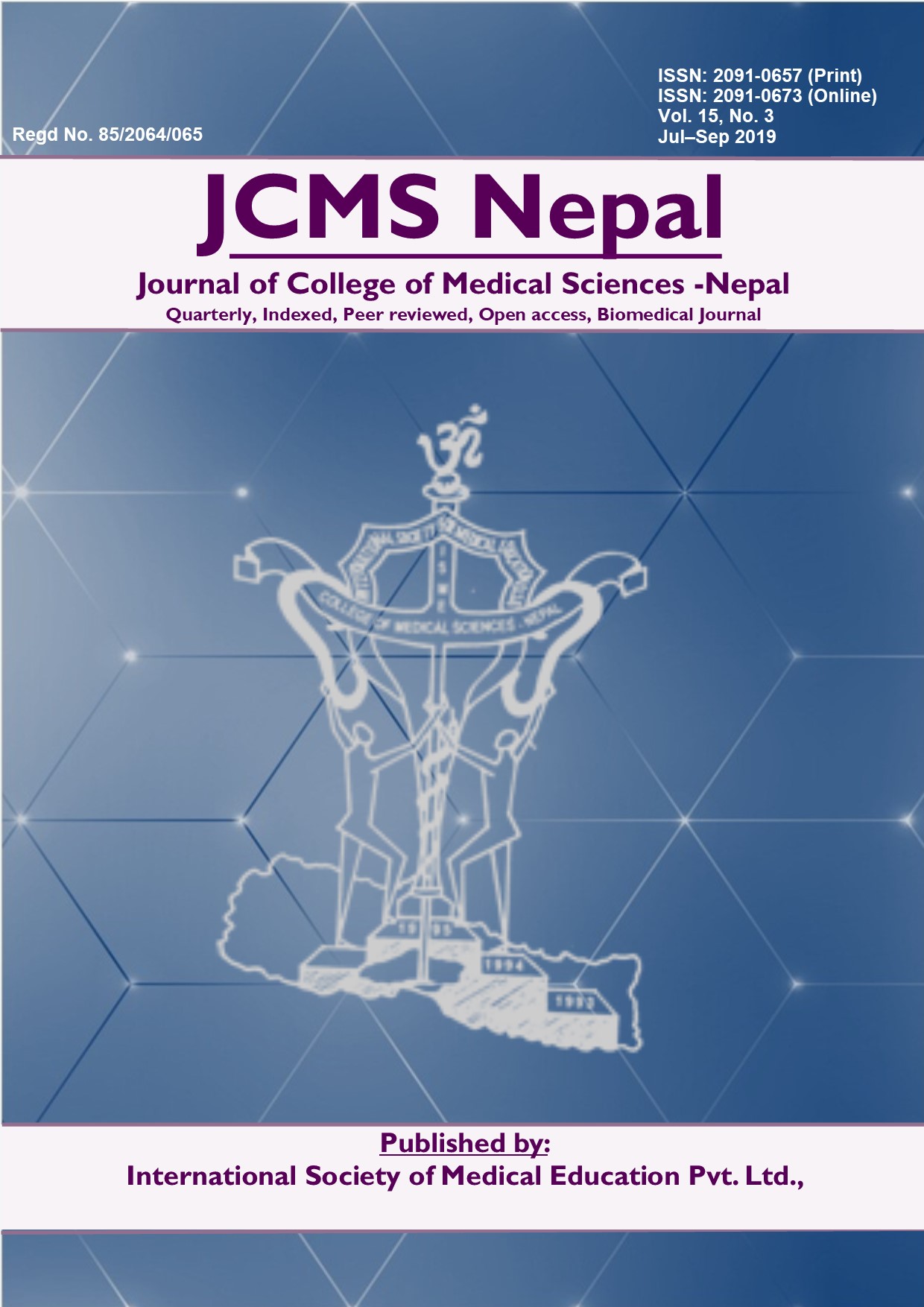Improvement of Vision after Resection of Pituitary Tumor
DOI:
https://doi.org/10.3126/jcmsn.v15i3.24895Keywords:
Pituitary adenoma, predictors, trans-sphenoidal resection, visual outcome, visual improvementAbstract
Background: Pituitary adenomas are the most common type of pituitary disorder. Compression of anterior visual apparatus leads to impairment of vision. Visual impairment depends on individual relation between tumor and visual apparatus, duration of compression, timing of operative intervention amongst others. Surgical excision is treatment of choice for tumors causing impairment of vision. Predicting outcome after surgical decompression thus helps both patient and surgeon to make realistic expectations and avoid unnecessary complication from overzealous aggressiveness. Predictors of visual outcome are not well established. This study aims to identify factors that predict visual improvement after resection of pituitary tumor.
Methods: A prospective study was planned to study factors associated with visual outcome. Visual acuity was measured by using snellen’s chart and categorized using WHO vision impairment scale for distant vision. Visual field was measured either by Humphrey or Goldmann perimetry. Visual evaluation was done before surgery and after 3 months of surgery. Data was analyzed using SPSS version 23.
Results: Twenty-eight eyes of fourteen patients were evaluated. Mean age at presentation was 38 years. Mean duration of impairment of vision at presentation was 13 months. Nonfunctioning pituitary adenoma was the most common pathology. Mean size of tumor was 3.07 cm. Visual acuity improvement was seen in 17(61%) and visual field improvement in 16(57%) of patients. Visual outcome was significantly affected by preoperative visual status and size of tumor. Extent of resection, duration of symptom were not associated with visual outcome.
Conclusion: Excision of Pituitary tumor from sella provides enough decompression to anterior visual apparatus resulting in improvement of visual acuity and field of vision. Preoperative visual status and size of tumor can predict postoperative visual outcome.
Downloads
Downloads
Published
How to Cite
Issue
Section
License
This license enables reusers to copy and distribute the material in any medium or format in unadapted form only, for noncommercial purposes only, and only so long as attribution is given to the creator.




